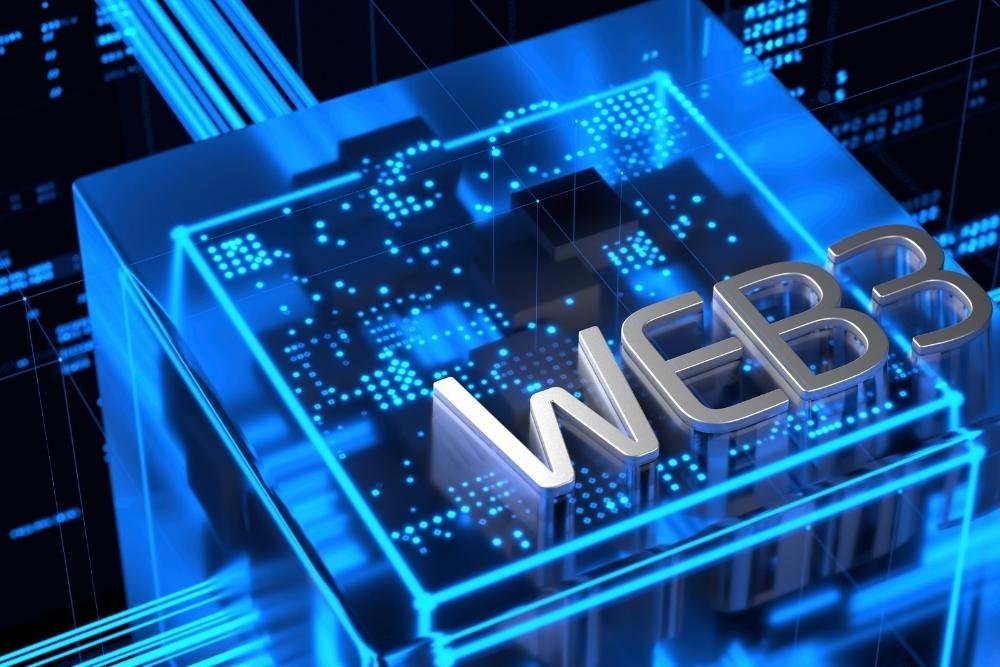Non-fungible tokens (NFTs) are blockchain digital assets with unique characteristics. They can represent various things, including art, collectibles, game items, real estate titles, or even Web 3 identification. This article will examine what Web 3 identification is and how it works with NFTs.
What is an NFT Web3?
Web 3 identity refers to an individual’s online presence and reputation across multiple platforms. It includes information such as social media accounts, email addresses, and usernames/passwords for websites and services they use regularly. This data helps create a profile about each person, which companies can use to verify their identity.
Why does Digital Identity Matter in Web3?
In the emerging Web3 era, digital identity plays a crucial role. With the increasing dependence on digital platforms and interactions, having a secure and trustworthy digital identity is essential for individuals and businesses.
One reason digital identity matters in Web3 is because it enables users to control their personal data. In traditional web platforms, users often have to trust third-party entities with their personal information, which can lead to privacy breaches and data misuse. However, with Web3 technologies like blockchain, individuals can create and manage their digital identities, giving them complete control over their data and how it is shared.
Digital identity is also essential in Web3 because it allows seamless and secure interactions between platforms and applications. With decentralized systems and protocols, users can authenticate and verify their identity across various platforms without intermediaries. It streamlines processes and reduces the risk of fraud and identity theft.
Furthermore, digital identity in Web3 promotes inclusivity and accessibility. With traditional systems, individuals with formal identification documents or those from marginalized communities may need help accessing online services.
However, with digital identity solutions that leverage decentralized technologies, individuals can create verifiable identities that are not dependent on traditional forms of identification. It opens up opportunities for financial inclusion, access to education, and participation in the digital economy for previously excluded individuals.
How are NFTs Used in Web3?
NFTs have become increasingly in demand in cryptocurrency and blockchain technology. NFTs are unique digital assets representing ownership or proof of authenticity for various digital and physical items, including art, music, videos, and more. One area where NFTs are being utilized is in the realm of web3 identity.
Web3 identity refers to the concept of using decentralized technologies, such as blockchain, to establish and manage digital identities that are secure, private, and controlled by the individual. NFTs can play a role in this by serving as a form of blockchain-based identification. Instead of relying on traditional identification methods like usernames and passwords, individuals can use their NFTs to prove their identity and access various online services and platforms.
The way NFT web3 identity works is through the use of smart contracts on a blockchain. When an individual creates an NFT representing their identity, the NFT is minted on the blockchain and associated with their unique identifier. This NFT can be used as proof of identity when interacting with different web3 services.
Example
For example, an individual wants to access a decentralized social media platform. Instead of creating a new account with a username and password, they can connect their NFT identity to the forum. The platform verifies the authenticity of the NFT and grants the individual access to their account. It eliminates the need for centralized entities to store and manage user data, enhancing privacy and security.
NFT web3 identity also allows for greater control over personal data. Users can choose which aspects of their identity to share with different platforms and can revoke access anytime. It puts individuals in charge of their data and reduces the risk of data breaches or misuse.
In short, NFT web3 identity leverages the unique properties of NFTs and blockchain technology to create a decentralized and secure way for individuals to prove their identity and access online services. As the technology evolves, we expect to see more innovative use cases for NFT-based identity solutions.
Benefits of Using NFT Web3 Identities
Increased Security
By storing your personal information immutable on the blockchain, you ensure that no one else can gain access or manipulate it without permission. It makes it much harder for hackers or malicious actors to steal identities or impersonate others online.
Improved Verification Processes
Companies often require customers to undergo lengthy verification processes before allowing them access to certain products or services. Still, with NFT-based identities, this becomes much simpler since all the necessary info is already available and securely stored in one place, making secure authentication faster and more efficient.
How do I Create an NFT Web3?
Creating an NFT (Non-Fungible Token) Web3 involves several steps and considerations. First, you need to understand the basics of blockchain technology and the concept of NFTs.
To create an NFT Web3, you will need to follow these steps:
Choose the blockchain platform
Decide which blockchain platform you want to use for creating your NFT. Ethereum is the most favored platform for NFTs, but other options like Binance Smart Chain and Flow exist.
Set up a digital wallet.
You will need a digital wallet that reinforces the blockchain platform you choose. This wallet will store your NFTs and interact with the blockchain. MetaMask is a commonly used wallet for Ethereum.
Create or acquire digital content.
Determine what digital content you want to turn into an NFT. It could be artwork, music, videos, or any other digital item that you can tokenize.
Mint your NFT
Minting an NFT involves creating a unique token on the blockchain that represents your digital content. This process typically requires using a decentralized application (DApp) or a marketplace that supports NFT creation. Platforms like OpenSea, Rarible, or Mintable allow you to mint NFTs.
Upload and provide metadata.
When minting your NFT, you must provide metadata that includes details about your digital content, such as title, description, image, or video, and any additional attributes or royalties you want to assign to your NFT.
Pay gas fees
Gas fees are transaction fees required to interact with the blockchain network. You must pay these fees when minting your NFT and performing any other transactions related to your NFT.
List and sell your NFT
Once your NFT is minted, you can list it on a marketplace for sale. Marketplaces like OpenSea or Rarible allow you to create listings and set a price for your NFT. You can also auction your NFT or sell it through other channels.
It’s important to note that creating an NFT Web3 involves technical knowledge and familiarity with blockchain technology. If you’re new to this space, seek guidance or collaborate with experienced developers or artists who have already created NFTs.
Conclusion
NFT-based Web 3 identifications offer increased security and improved verification processes compared to traditional methods while still protecting individuals’ privacy at all times due to its decentralized nature. As technology advances, so does our ability to defend ourselves against fraudsters and scammers, ensuring safe, secure transactions both now and in future generations.






